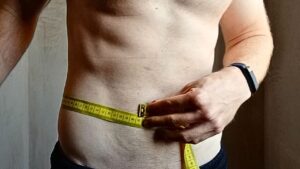The size of your waist can be a good indication of whether you are at an increased risk of certain health conditions like heart disease and diabetes. It’s relatively easy to measure your waist and you can even get a good approximation without a tape measure. Here’s how to get started.
Measuring Your Waist Circumference
The simplest way is of course to use a flexible tape measure. For most people, your waist will be in line with or slightly above your belly button. Here are some key considerations when taking a measurement:
- It’s best to stand up with your feet shoulder width apart
- Try to stand naturally, don’t suck in your stomach, just breathe out and relax
- For an accurate reading, there should be no clothing between the tape measure and your skin
- Make sure the tape isn’t twisted, and position it level with or slightly above your belly button
- When measuring, the tape shouldn’t have any slack it. However, it shouldn’t be so tight that it compresses your skin
- If in doubt, measure a few times to make sure it’s consistent
Here’s a short video demonstrating how to measure your waist circumference.
Measuring Your Waist Circumference (without a tape!)
What do you do if you don’t have a soft tape measure? Don’t worry, I’ve got you covered, though you will need to improvise. You will need:
- Something to go round your waist e.g. a computer cable or a skipping rope.
- Something in your house with a known length or width. I like a piece of A4 paper.
Put the rope or cable round your waist, as if it were a tape measure. Now locate the point it overlaps with the start of the cable and keep your fingers there. Congratulations, you now know your waist is the length from the start of the cable to where your fingers are.
Next you’ll need to offer it up to something with a known length. If you have a ruler or other kind of non-flexible measuring device then that can be used to determine the length of rope/cable.
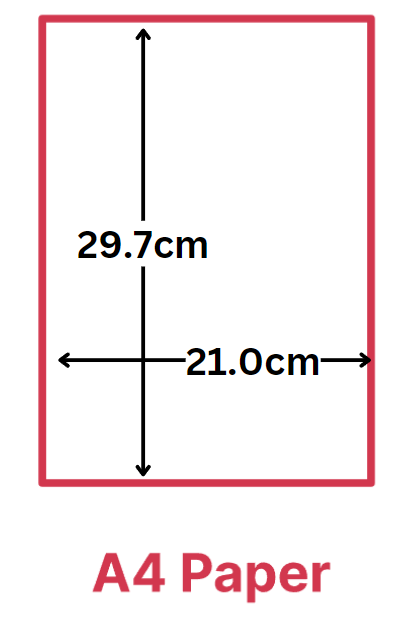
If not, find a household object with a known length. For instance, the internet tells me a piece of A4 paper is 29.7cm long and 21.0cm wide. You can also fold it in half in both directions to generate a distance of 14.85cm (half the length) and 10.5cm (half the width).
Keep track of how many full lengths are in the rope/cable, and then use a best estimate for any left over section. For example, my cable was two full length of A4 (2 x 29.7cm) and almost the full width (21cm), giving me a measurement of ~80cm. Note that this was 1cm different to using the soft tape measure (81cm), so you may need to do it a few times and take the average.
Here’s a short video demonstrating how I approximated my waist measurement using a mobile charging cable and a piece of A4 paper.
What does my waist measurement mean?
Now that you (hopefully) have a reliable number, what does it mean? Your waist measurement is a useful tool for indicating how much fat you have stored around your mid-section. This is important, because of something called visceral fat. This is an internal fat that sits around your organs, and is associated with an increased risk of health problems compared to other types of fat.
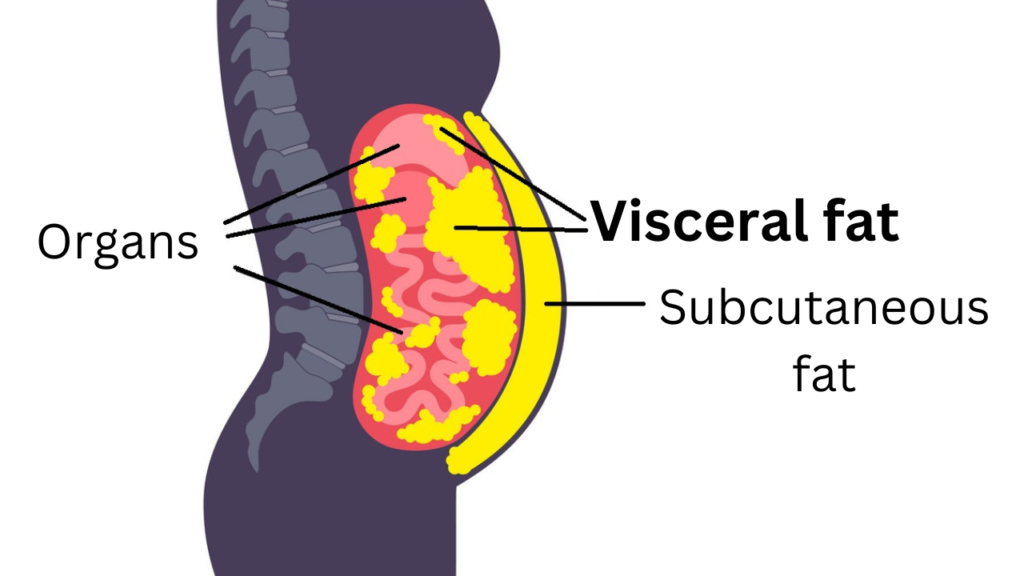
When it comes to assessing your waist measurement, you also have to factor in your Body Mass Index (BMI):
For men:
- Low risk: Healthy BMI and waist circumference below 94cm (for Asian men this drops to 90cm)
- Increased Risk: Overweight and waist circumference between 94 and 102cm
- High Risk: Overweight/Obese and waist circumference above 102cm. This is equivalent to a 40 inch waist.
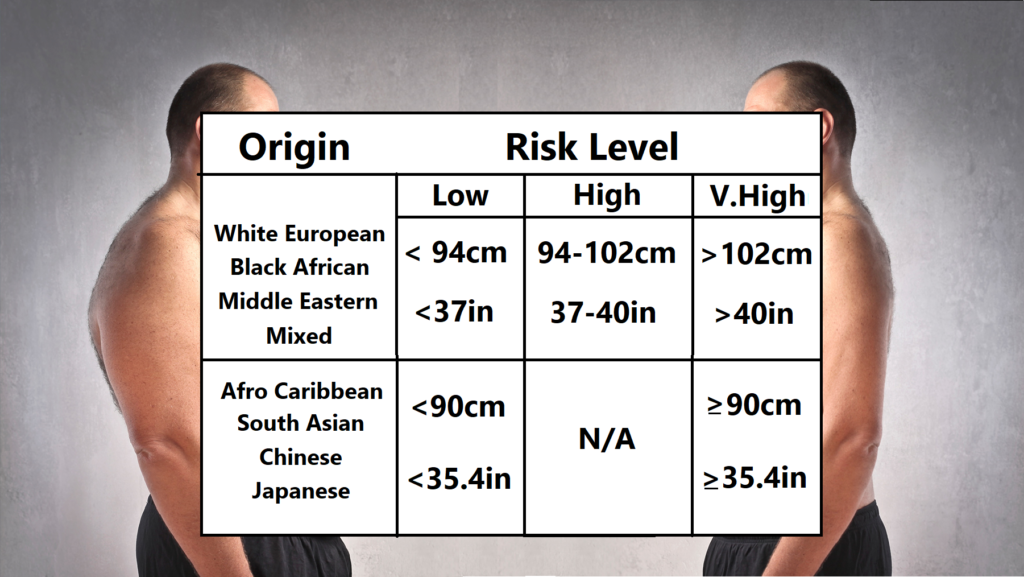
For women:
- Low risk: Healthy BMI and waist circumference below 80cm
- Increased Risk: Overweight and waist circumference between 80 and 88cm
- High Risk: Overweight/Obese and waist circumference above 88cm (for Asian women this drops to 80cm). 88cm would be equivalent to a UK size 16 or a US size 18 pair of trousers.
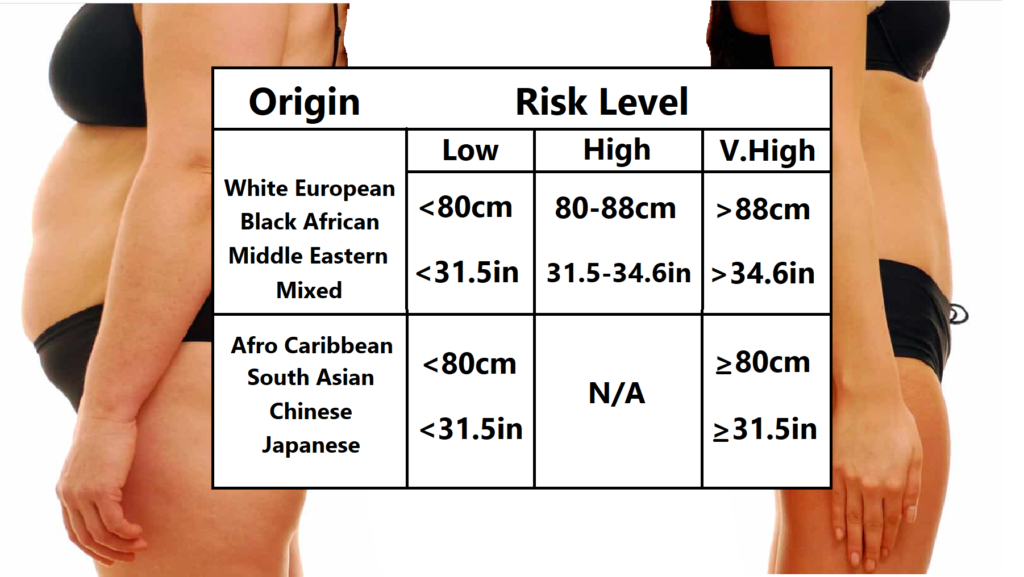
Those with an Asian ethnicity tend to carry more fat and less muscle at the same weight as a white European. This means they are at a relatively higher risk at the same waist measurement. The risk relates to high cholesterol levels, high blood pressure and increased risk of heart disease and diabetes [1].
[1] Health risks associated with high waist circumference: A systematic review, Darsini et al. 2020

